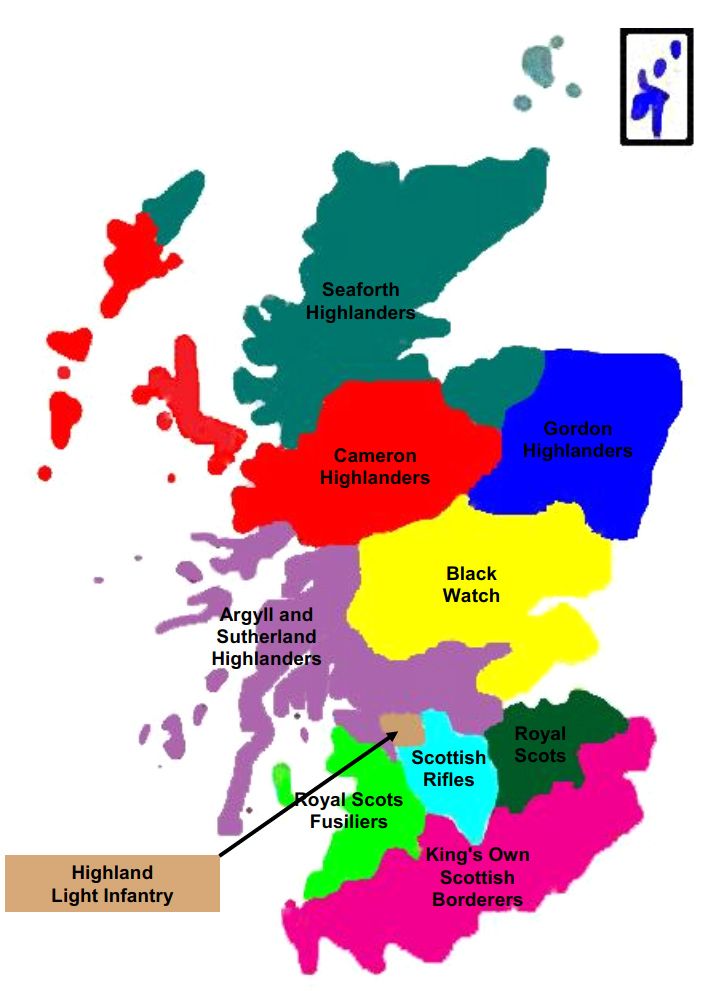The counties assigned to the various Scottish regiments as recruiting areas by the time of the First World War were as follows –
Royal Scots – City of Edinburgh, County of Edinburgh (Mid Lothian), Haddingtonshire (East Lothian) and Linlithgowshire (West Lothian)and Peeblesshire.
Royal Scots Fusiliers – Ayrshire
King’s Own Scottish Borderers – Berwickshire, Drumfrieshire, Roxburghshire, Kirkcubrightshire, and Selkirkshire.
Cameronians (Scottish Rifles) – Lanarkshire and Parts of Glasgow
Black Watch – Fife, Forfarshire and Perthshire.
Highland Light Infantry – Glasgow.
Seaforth Highlanders – Caithness, Cromarty, Elginshire, Nairnshire, Orkney, Ross-shire, Sutherland.
Gordon Highlanders – Aberdeenshire, Banffshire, Shetland and Kincardineshire.
Queen's Own Cameron Highlanders - Inverness-shire.
Argyll and Sutherland Highlanders – Argyllshire, Bute-shire, Clackmananshire, Dumbartonshire, Kinross-shire, Renfrewshire and Stirlingshire.
The Royal Scots Greys and the Scots Guards recruited from across Scotland.
The reality was that apart from the territorial battalions at the start of both World Wars and during National Service the number of men serving in a regiment who came from its official recruiting area probably almost never exceeded 40%.
According to David French's book "Military Identities" between 1883 and 1900 the average percentages of men born in the assigned regimental recruiting area were -
Cameronians/Scottish Rifles - 38.1%
Black Watch - 36.4%
Highland Light Infantry - 25.4%
Royal Scots - 23.8%
King's Own Scottish Borderers - 21.8%
Gordons - 21.1%
Seaforths - 19.7%
Argylls - 19.1%
Royal Scots Fusliers - 10.6%
Camerons - 9.6%
Map
This is an improved version of the map in the Quick Guide to the Scottish Regiments courtesy of the Scotland's War team.
